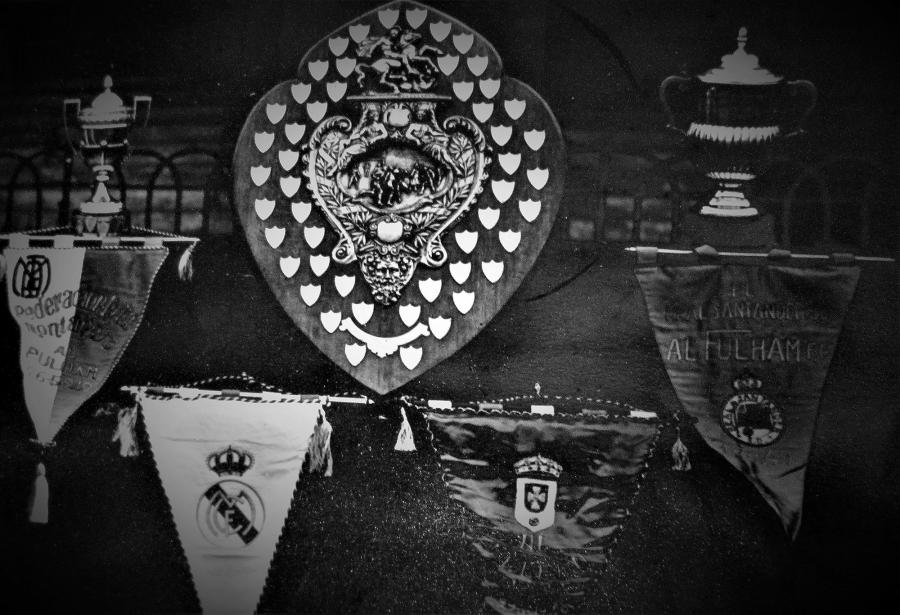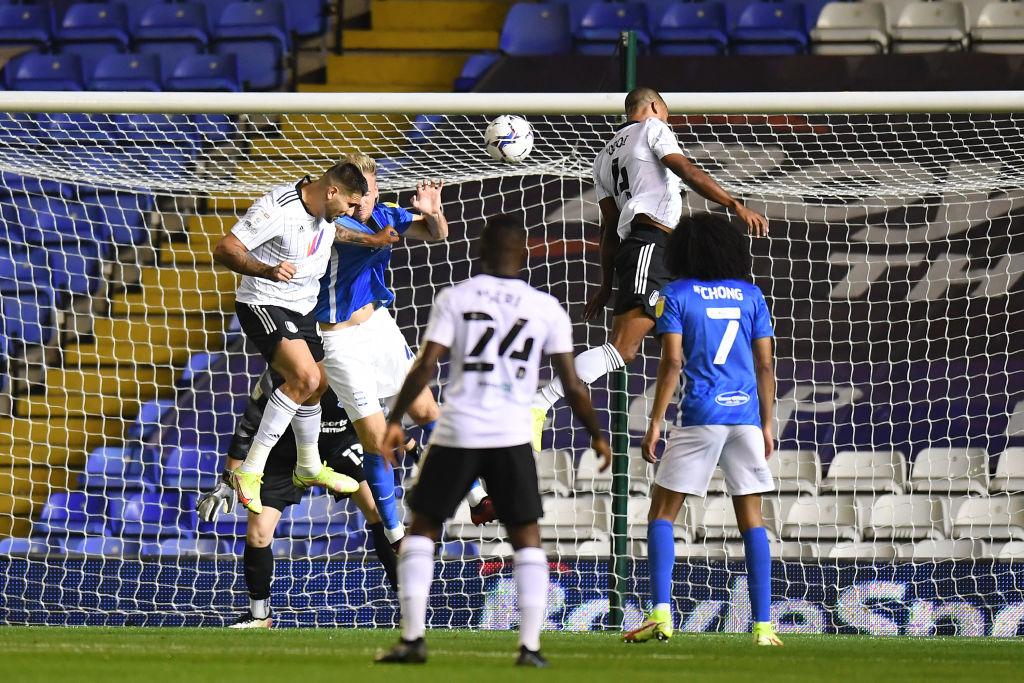After a dazzling August (I do not mean the weather) Fulham's progress lost a bit of its shine on 11 September when the team visited newly promoted Blackpool.
The overall performance harked back to last season with Fulham having the greater possession but still managing to lose. This was exemplified by Ivan Cavaleiro wasting an early chance that could have set his team on the path to victory. Thereafter, Blackpool looked the more determined and a rare error by Tim Ream almost led to a Tyreece John-Jules goal. Paulo Gazzaniga had to save with his feet.
Immediately after the interval, a weak clearance allowed Kevin Stewart to send Josh Bowler racing through Fulham's defence. Bowler, underused by Marco Silva at Everton and previously discarded by Fulham, took the utmost pleasure in sweeping the ball past Gazzaniga.
Apart from a Denis Odoi header the visitors offered little in reply. The dearth of good action meant that the club's official two-minute video of the match included a minor spat between Aleksandar Mitrovic and goalkeeper Chris Maxwell.
Consolations?
This defeat had only two consolations for Marco Silva – the introduction of newcomers Domingos Quina and Rodrigo Muniz, and a reminder that the road to promotion will not be as easy as it seemed earlier in August.
Whatever Silva and his associates said to the players afterwards, it was certainly effective. At Birmingham City on Wednesday evening, Fulham tore into the opposition and took an early lead from Denis Odoi's header.
The gaffer had included another newcomer – Nathaniel Chalobar – and it was the ex-Watford player whose intervention prevented Jeremie Bela from marking Odoi. Nathaniel then won a penalty when Harlee Dean executed a particularly clumsy tackle. Mitrovic made no mistake this time, giving Fulham a 2-0 lead at the interval.
The Birmingham boss Lee Bowyer sent on Troy Deeney, only for Harry Wilson to put Fulham further ahead from a cunning Chalobar pass.
Despite the increasing pressure from the home team, Mitrovic completed the scoring in the 83rd minute after an exchange of passes with Jean-Michael Seri.
In the closing moments, the Blues scored from a Deeney penalty and threatened to reduce the lead further – but this was a Fulham performance that almost defied criticism. Nathaniel made an instant hit with the fans, who saw him as a second Andre-Frank Zambo Anguissa.
A tangled web
I recently recommended an excellent book entitled The 10 Football Matches that Changed the World – And the One that Didn't by Jim Murphy, then the MP for East Renfrewshire (Biteback 2014).
Of the 10 matches chosen the most harrowing are the Hillsborough disaster and the 1969 World Cup qualifier between El Salvador and Honduras. The unfortunate suicide of a female supporter Amelia Bolanios and the furious exchanges between the two countries gave a pretext for El Salvador to invade its neighbour and start a brief but bloody war between the two impoverished dictatorships. Murphy vividly narrates both of these avoidable tragedies.
The other eight matches, thankfully much less distressing, are all fascinating and most have a Fulham FC connection.
The earliest match covered is the 1883 FA Cup Final between the Old Etonians and Blackburn Olympic. To augment his understanding of the tie Jim Murphy contacted a schoolmaster at Eton College, Angus Graham-Campbell, who showed him the archives of the school magazine.
In theory both teams in the Final were amateur but the Etonians, who lost after extra time, had serious doubts about their working-class opponents: "For three weeks before the final match they went into a strict course of training, spending, so report says, a considerable time at Blackpool and some days at Bournemouth and Richmond. Though it may seem strange than an 11 composed of mill-hands and workingmen should be able to sacrifice three weeks to train for one match, and to find the means to do so."
The Old Etonians, who were the Cup-holders, took an early lead, but suffered injuries as the match progressed. Effectively with only eight players they held out until the 65th minute when Olympic equalised. Rather than put the northerners to the expense of a replay the Old Boys agreed to extra time and their fitter opponents achieved a narrow victory. The match was significant because it ended the prevalence of amateurs in the FA Cup. For the rest of the century the competition was dominated by professional teams from the North and Midlands.
Graham-Campbell, a Fulham FC supporter, lent Jim Muphy his handwritten archives (greater love hath no man) and arranged to meet by the Johnny Haynes statue outside Craven Cottage so the documents could be returned. The author kept the appointment and Fulham beat Bolton that day, so it was a happy ending all round.
Jim Murphy hails 1883 as 'the moment football announced to the world it was heading their way'. This was certainly true of Fulham. Though the young men who started our club must have been kicking a ball around in the streets previously, we have yet to discover any evidence of organised matches before that year.
Murphy's second chapter relates the bitter and violent relationship between Glasgow's Rangers and Celtic, at its worst in the 1920s but still persisting today.
When Graeme Souness managed Rangers he bravely ignored tradition and tried to sign suitable players irrespective of their religion. It was Mo Johnston who in July 1989 became the first Roman Catholic for many years to play for Rangers. Souness' earlier choices, who had reluctantly rejected his offer, Ray Houghton and John Collins, both had Fulham connections. It may be strange to see those two bracketed together – Ray played for Fulham in the early 1980s, John two decades later – but they were only six years apart in age.
The antagonism between Rangers and Celtic has been poisonous enough but it mirrors the rivalry between Barcelona and Real Madrid.
Although the Spanish capital held out until April 1939 against the Fascists its famous football club is forever linked with the dictator Francisco Franco. Under his regime both clubs had to alter their names to look more Spanish and any official suspected of Republican sympathies was replaced by a Fascist. Even so, Barcelona FC was still regarded as unfriendly to the new order. Jim Murphy describes the semi-final of the Generalissimo Cup (named after the dictator) in 1943. Arriving in Madrid, the Barcelona players were subjected to sustained intimidation that even intruded into the changing room and onto the pitch. The result was inevitable and the score (11-1) speaks for itself.
When I started watching Fulham in the spring of 1948, the club's centre-half was Jack Watson, who at the end of the season made the surprising career choice of joining Real Madrid as player/coach.
I wonder how aware he was of the political situation in Spain and within his new club. Perhaps he should have stayed in London because the next season Fulham won promotion to the top tier. The players' reward was a visit to Spain where they played against Jack's team and lost 1-0. The photograph (below) shows the Championship shield with the white Real Madrid pennant below it.

The Spanish dictator was not particularly interested in Real during the 1940s – they were overshadowed by Atletico Madrid – but declared himself a fan in the following decade when the club became one of the best in Europe.
Their Barcelona rivals are convinced that the government prevented them from signing Alfredo di Stephano before he became a superstar at Real. Franco's death and the return to democracy have not entirely removed the bitterness between the two clubs.
I shall describe other relevant chapters of this book in future blogs.
The views expressed in this blog are those of the author and unless specifically stated are not necessarily those of Hammersmith & Fulham Council.
Want to read more news stories like this? Subscribe to our weekly e-news bulletin.

